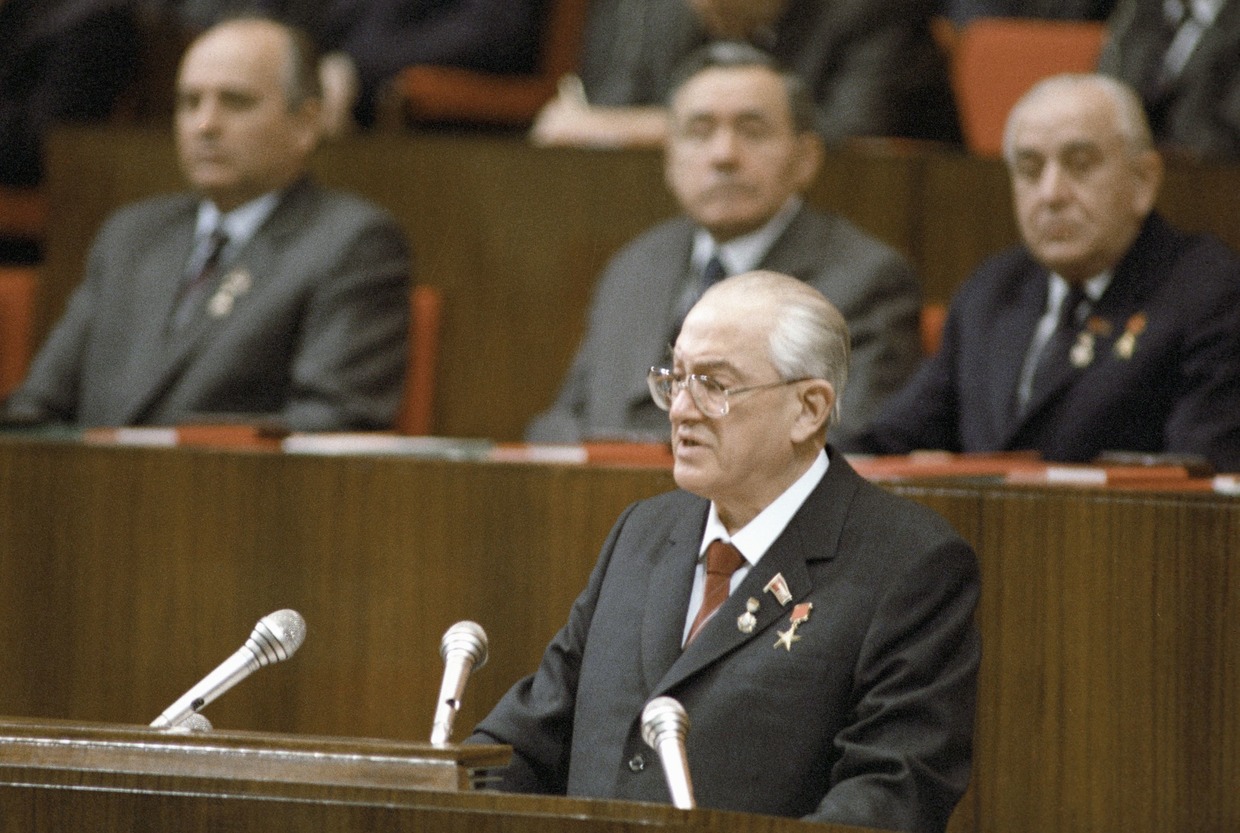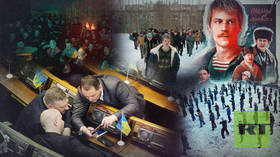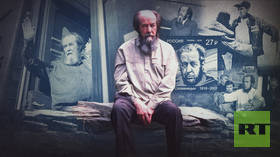Old man behind the wheel: The life and death of the USSR’s last gerontocrat

Remembered by his contemporaries as a sickly old man who moved with difficulty and had speech problems, Konstantin Chernenko ruled the USSR for only 13 months and spent most of that time in hospital. However, the Chernenko phenomenon deserves a second look, as much of his activity was linked to the fateful processes that came to define the final years of the Soviet Union. Indeed, his death paved the way for the rise to power of Mikhail Gorbachev.
The rapid worsening of Chernenko's health echoed the fate of his immediate predecessor, Yuri Andropov, whose 15-month tenure at the helm was characterized by serious illness. The succession of quick deaths of General Secretaries caused concern in the Soviet Union and elsewhere, as they underscored the vulnerability of older candidates in the nation's highest office.
Aspiring Propagandist and Apparatchik
Chernenko came from a family of peasants who had moved from Ukraine to Siberia and had a lot of relatives, many of whom he rewarded with jobs. However, he exercised discretion, and was able to do so without upsetting Soviet sensibilities.
Upon graduating from a village school, Chernenko took steps to join the Communist Party. At age 18, he became head of the Agitation and Propaganda Department of the district committee of the Komsomol [the youth organization of the Communist Party – RT]. From his earliest years, Chernenko saw his future in the Party and in administrative work.
After serving in the army, he quickly began to make a Party career, and at the height of World War Two, he was working in party organs in Siberia. Konstantin never volunteered to go to the front, and was soon successfully enrolled in the Higher School of Party Leaders. Upon graduation, he was sent to work in Penza. In general, Chernenko’s career progression was slow and gradual, but nevertheless steady and consistent. He became a successful party official, and by 1948 had his sights on a position in Moscow, where he was about to be appointed to the Central Office of the Communist Party.
Everything was going great, until his career stumbled over a complaint.
A letter was received by the Party authorities in Moscow from a woman named Nina Kushner. She claimed to have been Chernenko’s wife until he left her following the death of their child. She alleged that he'd left her for another woman, who later bore him a son. Nevertheless, according to the allegations, he then proceeded to leave that woman for a new lover.
When the Party authorities attempted to verify the information, they discovered that Chernenko had had married and then dumped a total of six women. In the end, the Soviet authorities concluded that Chernenko had more than once abandoned his former mistresses with children and characterized Konstantin as “addicted to women” and “morally unstable”, a verdict that seemed to put an end to his career plans.
As a result, instead of Moscow, he was sent to work in Moldava. However, there he landed a job next to a Ukrainian official named Leonid Brezhnev [who would later lead the USSR – RT], shortly before the latter was appointed head of the local Communist government. That acquaintance shaped Chernenko’s political rise years later.
Brezhnev’s Shadow
Chernenko worked in Moldova for six years, including two alongside Brezhnev. During that time, they became very close friends: whenever Brezhnev was promoted, he would take Chernenko along. Chernenko served as Brezhnev’s loyal, useful henchman.
When Brezhnev was transferred to Moscow, Chernenko had to work without him in Moldova for another four years. However, as soon as Brezhnev’s influence strengthened, he transferred his loyal protégé to a key position in the Soviet capital. Thus, Kushner’s letter delayed Konstantin’s intended transfer by several years, but accidentally put him in contact with the future head of the USSR.

In 1956, Chernenko finally found himself in Moscow. Along with a position in the Central Committee of the Communist Party, he got his hands on crucial levers of influence. He became head of the mass agitation section of the Propaganda and Agitation Department, and nine years later, when Brezhnev took over the USSR, Chernenko became head of the General Department of the Party. This was essentially the most important office, the coordinating service of the Central Committee, and no decision could be formalized without its approval. Some documents and resolutions could quickly receive approval in the General Department, while others would be slowed down and not passed at all. Since all the state power in the USSR was tied to the structures of the Communist Party, Chernenko essentially gained power over a key institution of state governance.
Chernenko also gained access to important Party secrets. He established a strict access control system over archives and documents, and even major Soviet officials were often unable to view them. Among other things, he was able to keep questionable pages of his own biography safely hidden, and to keep sensitive information out of reach of party leaders who might pose any danger to him and Leonid Brezhnev’s team.
Chernenko was an indispensable employee for the General Secretary. Some Soviet officials even called him “Brezhnev’s shadow.” He was in charge of mail addressed to the head of state, drafted bureaucratic responses and office documents, and made many state decisions on Brezhnev’s behalf. In short, he handled the bureaucratic and office work and devotedly assisted his friend and protector in day-to-day affairs. Chernenko was aware of everything that was happening among the top party leaders, and provided Brezhnev with timely and useful information, informing him of upcoming anniversaries or the next award ceremony, which was very important in the party ritualism of the time.
During the second half of the 1970s, as Brezhnev’s health began to deteriorate, his friend Chernenko was part of his inner circle. Along with Yuri Andropov, Dmitri Ustinov, Mikhail Suslov, and Alexei Kosygin, he became one of the most important Soviet leaders.
The General Secretary would often call Chernenko, consulting with him and giving him assignments. They also spent their leisure time together. Quite the connoisseur of the “bourgeois” lifestyle, Leonid Brezhnev loved the company of women and was a great fan of expensive cars and hunting. Since Brezhnev valued Chernenko, along with his other favorites like Andropov and Ustinov, he would often invite him to go hunting in Zavidovo (and official state residence in Tver region). An honor granted to very few, the right to accompany Brezhnev on his hunts was an indicator of the General Secretary’s favor. Never a fan of hunting and always prone to catch a cold, Chernenko nevertheless staunchly kept the company of his friend and patron. The trips Brezhnev made with his entourage to Zavidovo entailed a well-established ritual of hunting, drinking, and sauna.
Throughout Leonid Brezhnev’s 18 years in office, Chernenko was always by his side, both in work and in leisure. When Brezhnev during his final years was having health problems and had trouble functioning properly, it was Chernenko who began to play a huge role in the day-to-day work of the Soviet leadership, helping the General Secretary with his work.
“Age of sumptuous funerals”
The last years of Brezhnev’s reign witnessed a rapid ageing of the Soviet leadership, sparking discussions about “gerontocracy” – the rule of the elderly. The problem became a critical issue in the early 1980s. Due to a succession of Soviet leaders’ deaths, the time period became known as the “age of sumptuous funerals,” with people sarcastically describing the infighting at the highest echelons of power as a “hearse race,” which implied that the heads of the state and the Communist Party were now dropping off like flies amidst political turmoil.
Kosygin and Suslov were the first to pass away, followed by Leonid Brezhnev himself in 1982. The first men in line to replace him were Yuri Andropov and Konstantin Chernenko. Andropov came across as more powerful and charismatic, which promised some hope of reform, while Chernenko was associated with the conservative camp and perceived as more of a compromise candidate. Both had their own backers and vied with one another for power, while remaining acceptable to most Communist Party leaders.
Eventually, Andropov was picked to replace Brezhnev in 1982, and it was Chernenko himself who nominated him for secretary general. Andropov likely had mixed feelings about Chernenko. On the one hand, both men had been close to Brezhnev and were political allies on many issues. On the other – Chernenko was a competitor, which was probably why Andropov dismissed him from his long-held position of the head of the General Department of the Central Committee. Still, Chernenko retained his status as number two among the Soviet leaders.
Yuri Andropov is remembered as a controversial leader who sparked conflicting emotions. A former KGB head and a hardliner, he was, however, a civilian political appointee, not a career intelligence officer. Andropov was seen as someone who could initiate reforms aimed at liberalizing Soviet life and the economy.

During his 15 months in office, the first attempts were made to analyze the systemic failures of the USSR, as the government began to admit to economic problems and deficiencies. For the first time, the top leadership recognized that there was indeed stagnation, economic woe and corruption, and there were inefficiencies of the Soviet system in many areas. Andropov issued a call to “put the country in order,” followed by corruption charges brought against members of the Soviet elite, arrests, and headline-grabbing trials.
That effort, however, proved ineffective, mainly hurting ordinary citizens, who were picked up by the police in public places and charged with being absent from work. Attempts to bolster the Communist ideology sometimes led to absurd overreach. A report by Chernenko triggered an assault on rock musicians, who were arrested and tried, and on rock culture in general, which had spread among young Soviets.
Andropov's age and poor physical condition, however, took their toll, keeping him mostly on sick leave throughout his 15-month reign. Chernenko, the trusty second in command, was in charge of implementing many of the policies of the secretary general and the Soviet government during that time.
Chernenko at the helm of the USSR
Andropov died in early February 1984, and then 73-year-old Chernenko was chosen to become the general secretary of the Communist Party on February 13. Many saw his appointment as an acceptable, yet temporary, measure meant to give the party a reprieve and some time to plan ahead, since his failing health was no secret to the Soviet elites.
Like Andropov, the new head of the USSR made very few public or TV appearances. Even before his election, Chernenko suffered from a very serious case of emphysema, which was getting worse every day. While vacationing in Crimea in August 1984, he got severe food poisoning from a smoked fish given to him by Vitaly Fedorchuk, the Soviet interior minister, who had cured it himself. As a result, the new Soviet ruler spent most of his time in office in a hospital bed.
Chernenko’s term at the helm of the Soviet Union was short. Even though he had been instrumental in implementing many of Andropov’s decisions, once he became the supreme leader himself, Chernenko never accomplished much.
Even historians have a hard time figuring out what specifically happened or changed in the USSR under Chernenko. Admittedly, 13 months is a very short time, yet Chernenko did get something done.

Chernenko presided over the reform of secondary education, which extended schooling to 11 years. School education was divided into elementary school (grades 1 to 4), middle school (grades 5 to 9), and middle general school (grades 10 to 11). The new secretary general formally established September 1 as Knowledge Day, which was when the academic year began in the Soviet Union; this is still done today. However, some measures proposed by his reform, such as the beginning of mandatory schooling at the age of 6, were short-lived.
Chernenko attempted to complete the fantastic Siberian river reversal project, which had been conceived by his predecessors. The Soviet government undertook the impossible task of diverting the formidable flow of the great rivers in West Siberia southward with the goal of irrigating fields in Kazakhstan and Central Asia and replenishing the Aral Sea, which was drying up. Chernenko did not succeed in accomplishing the herculean task during his lifetime, and the plan was eventually scrapped under Gorbachev due to insufficient funds and environmental concerns.
In foreign policy, the Soviet Union led by Chernenko was trying to rebuild ties with China after relations had soured in the early 1970s. At the time, the Chinese Communist Party began to jostle for leadership in the Communist block, gradually pushing the USSR out. Following a series of local military conflicts, the Soviets severed diplomatic ties with China, until Chernenko began to defuse the standoff.
No political breakthrough with the US was achieved, however. After Washington boycotted the Olympic Games held in Moscow in 1980, Chernenko reciprocated by boycotting the Los Angeles games in 1984.
Things looked better in terms of Russo-French relations as evidenced by President Mitterrand’s visit to Moscow. Spanish King Juan Carlos I made his first trip to the Russian capital in Chernenko’s time as well.
However, little changed in terms of Soviet foreign policy as a whole.
While people expected Andropov to act as a reformer, Chernenko inspired no such hopes. A staunch Brezhnev ally, he bore all the hallmarks of the stagnation-era Soviet leadership style. Granted, the same could be said of Andropov, however, Chernenko was universally seen as a die-hard conservative.
Few things if any changed in the country after Chernenko took office. The “old guard” kept its hold on power, while winners of socialist competitions got their awards, party activist meetings continued as hours-long events held in crowded rooms, and other rituals were observed religiously. The government was still associated with bureaucracy and red tape; Soviet leaders delivered boring speeches and mostly busied themselves with insignificant issues instead of addressing the nationwide decline. Meanwhile, the Soviet economy was in a downward spiral and social tensions kept growing, as people were forced to wait in long lines outside stores with half-empty shelves.
The Soviet leadership was living in the past, showing little appetite for change or a comprehensive response to emerging crises. Meanwhile, a storm had been brewing on the horizon for a long time.
The passing of Konstantin Chernenko opened the door for Mikhail Gorbachev, whose arrival heralded a new era and eventually led to the collapse of the Soviet state. The roots of that collapse, however, can be traced back to the period of stagnation, when gerontocrats like Chernenko were at the helm.
















